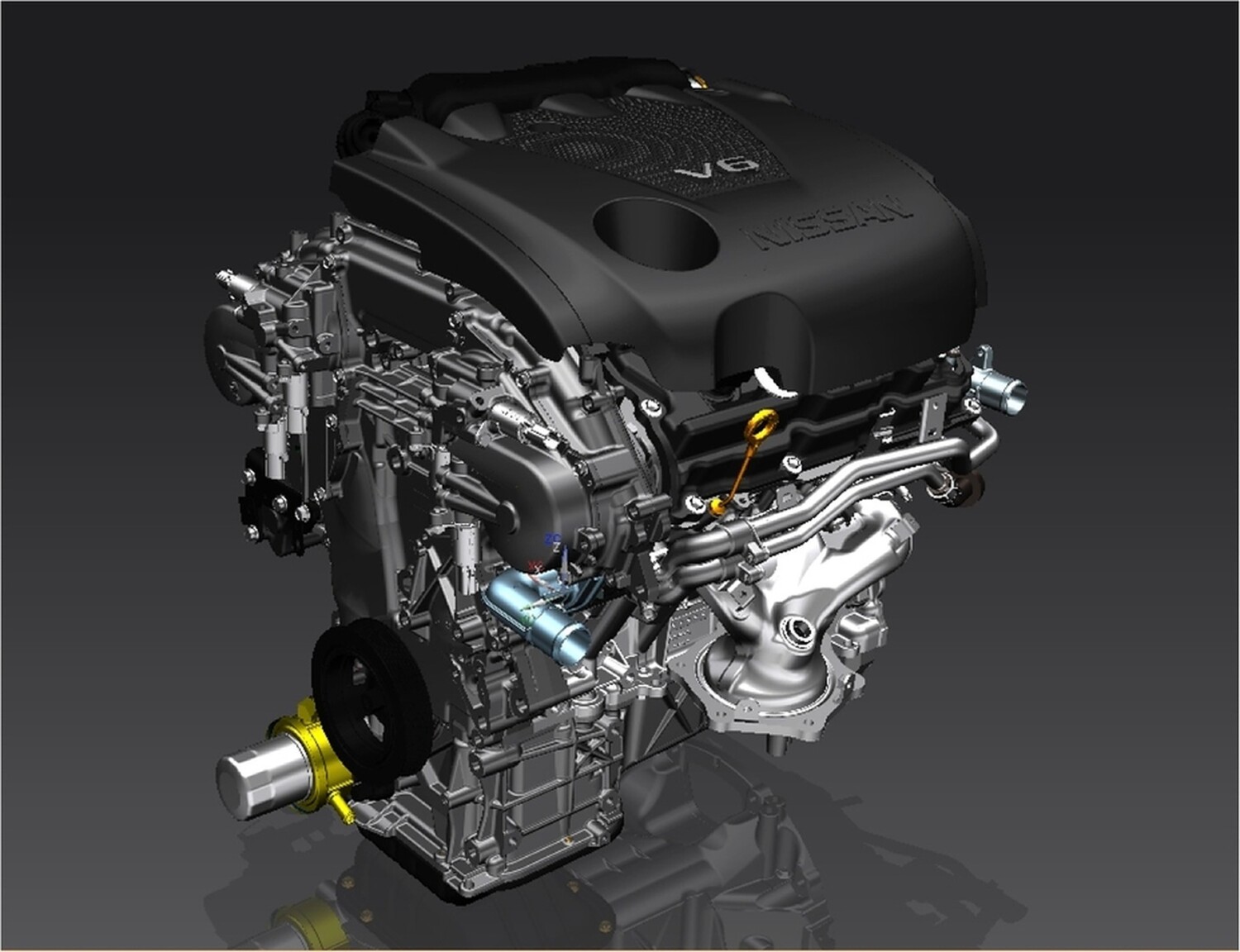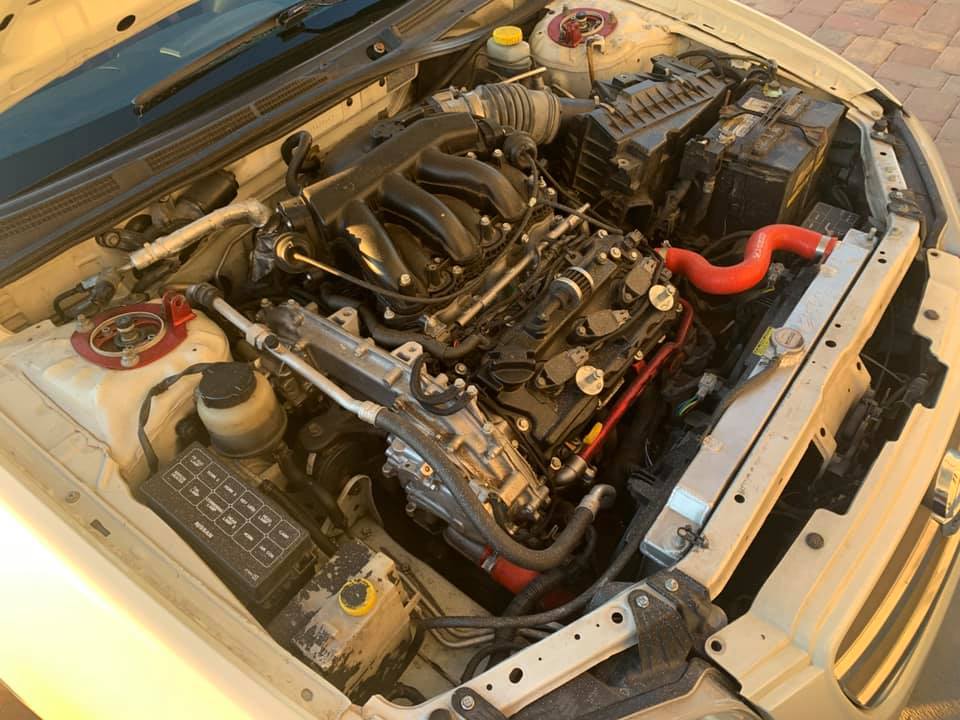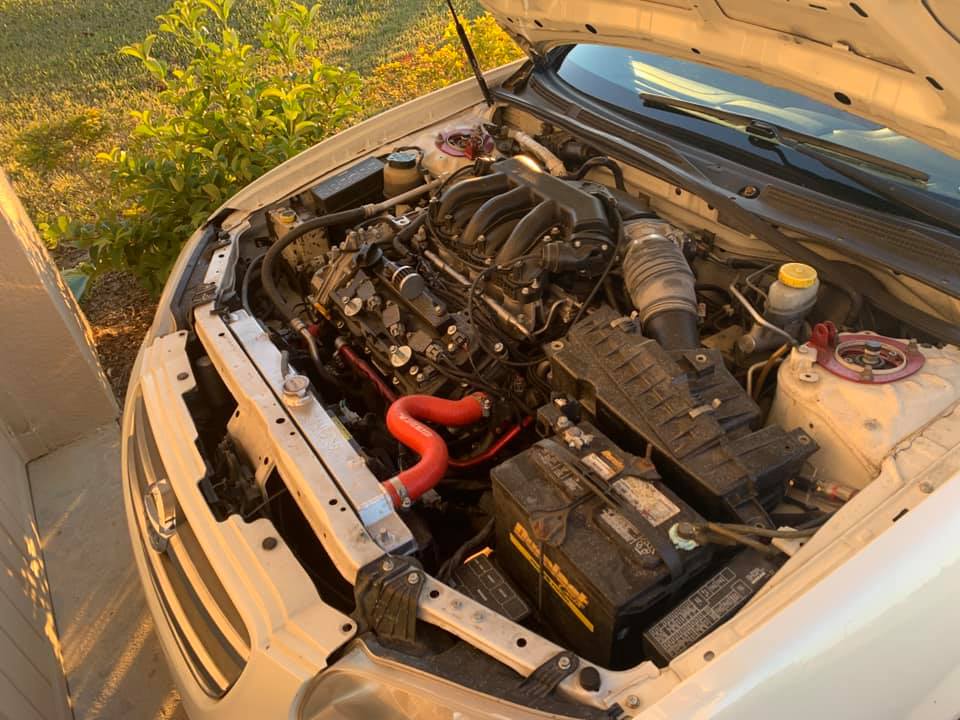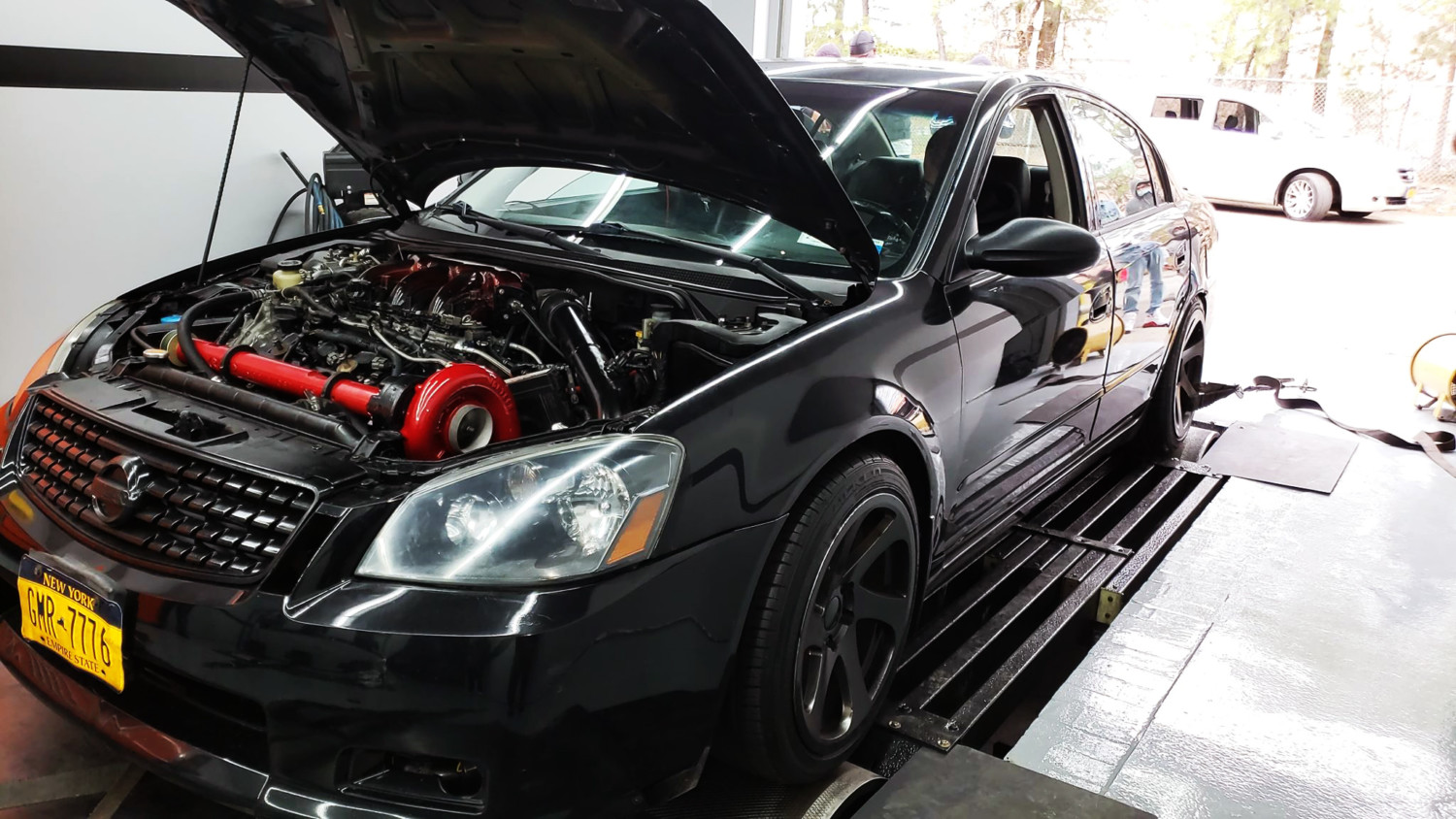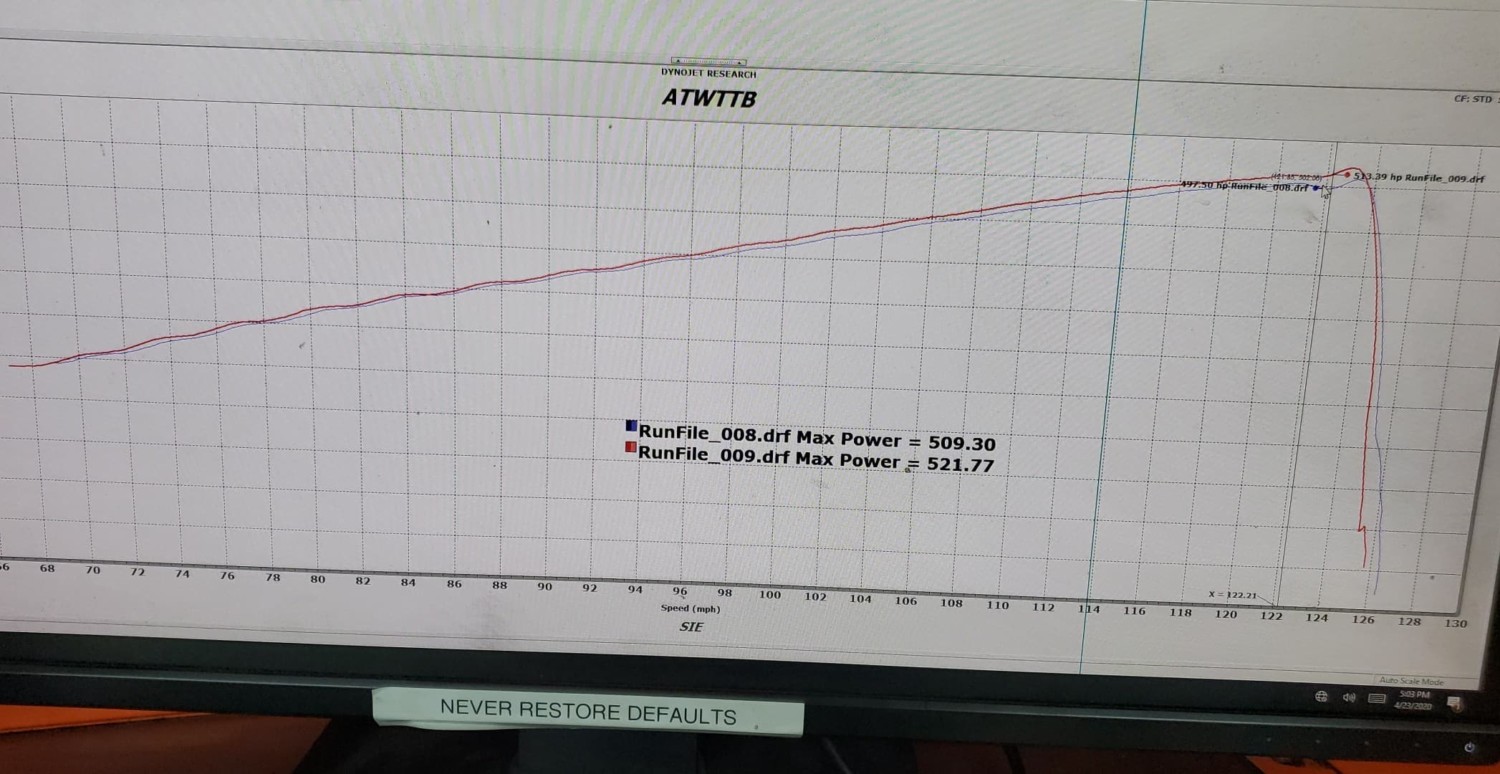Community Member Credit: CS_AR
Today I finished refurbishing the metal water pipes that run along the left side (e.g. nearest the radiator) of the engine.
After sanding and refinishing the pipes, I used some ceramic VHT exhaust header primer and paint that I had leftover from the Y-pipe. I’ve been slowly baking the pipes this afternoon to cure the ceramic paint before I do the installation. I’ve got to make sure the ceramic paint is fully cured and hardened before installing the o-rings and heater hoses. I did have to spend quite a bit of time sanding and polishing the hose connection areas to smooth off some rust that had formed between the hose rubber and the pipe. We’ll see how well the refinished hose and o-ring connection areas will hold up over time. The pipes are now in better condition than when I started.
Here are a couple of pictures that we may want to reference when someone has a water leak or needs to replace the o-rings or gasket. I like the Felpro gasket with the extra “red seal” area for the aluminum hose manifold mating surface. In the end, I reused some OEM o-rings that I already had on hand. I recommend using OEM o-rings as they will be the correct size.
I used 0000 steel wool to polish the aluminum pipe manifold o-ring and gasket mating surface areas. I might have been better off buying some new OEM pipes that come with a factory powder coat. But we can see how long the refurbished pipes last in the meantime.
Pardon my phone camera, as the pipes are actually a silver metallic color that matches the aluminum pipe manifold part.


Here are a couple of pictures with the refinished pipes on the car. Valve cover polishing was still a work in progress when I took a break to snap the following picture.

I changed the 10mm short bolts pipe mounting bolts to use hex cap heads with lock washers in the picture.

Refinishing the pipes baking the ceramic paint has been a small project in itself. The only reason I attempted it is the easy-to-reach location if something backfires on me. A
s a side note, the OEM heater supply pipe on a VH45DE comes nickel-plated from Nissan. So all I had to do when I got a new one was to polish it up a bit and then clear coat it for the long haul. On a VH45DE the pipe lives at the bottom of “death valley” buried under a Gordian Knot of hose and wiring harnesses. You don’t want to miss anything that could come back as a leak or a problem after you put one of those critters back together. You can see it in the picture below the supply pipe running underneath the short pieces of head coolant hose.

Here are a couple of pictures with the refinished pipes on the car. I sure hope the o-rings hold up. The pipes felt solid and I could tell the o-rings were sealing the connections.
Valve cover polishing was still a work in progress when I took a break last night to snap the following picture. More to come with engine details about the coolant crossover pipe.

The original 10mm mounting bolts were changed to use stainless hex cap heads with lock washers in this picture. If possible, I like to use this type of bolt for coolant and fuel connection bolts.

Fortunately, the 99 model (with a 95 model engine) where I refinished the pipes, had under 80,000 miles. I didn’t notice any rust on the inside of the pipes. The pipes came with an engine from a local car that had been in a bad rear end collision. I bought the motor and had it installed in the 99 model.
This year, I took the pipes from the 99 model’s original engine with under 170,000 miles and refinished them for the 98 model with over 235,000 miles.
There is a 2nd thread on this topic, where I refinished the pipes from the 98 model. Those pipes are some of the worst that I’ve seen to date. In the time frame for the 98 model project, I discovered soaking metal parts in muriatic acid removes rust in a hurry.
I think the quality of water that is mixed with anti-freeze to make coolant has a lot to do with the formation of rust or barnacles in a cooling system.
The 98 model lived in a part of the state when iron deposits in the water so high that people use water softeners to condition the water for indoor use. The iron content in that area’s water will stain plumbing fixtures unless the water is conditioned before use. I could see that in the cooling system when I had it open.
One of my cars, lived for many year in a part of TX that must have had a lot of sulfur or calcium in the water. I found crusty mineral deposits inside its cooling system.
Even though the area where I live has good water that does not require conditioning before use, I like to use a 50/50 mix of distilled water and Xerex G05. After seven years of use on all of my Nissan products, it seems to work.
So here’s a picture of the acid bath where I cleaned up some pipes and put them away in my workshop for another project. Naturally, some light surface rust has appeared on the freshly cleaned pipes because I didn’t prime and refinish. I have an EGR pipe that I will treat sometime later in the year. I have another VQ30 from an I30 that I will be semi-overhauling to have on the shelf in the event I need a replacement engine.

Here’s a picture of the pipes that were refinished in this thread almost 3 years later. I am satisfied with how they are holding up. No surface rust, no complaints, and low maintenance.


I see a coolant flush product advertised for removing rust. This seems to be more popular with iron block engines.
If you find one that you think is safe to use on an aluminum engine, you might try it. One thing to note is acid and aluminum do not get along very well.
An aluminum part that is submerged in a muriatic acid bath that is strong enough to remove rust from metal parts, will fizz like an effervescent tablet. You can watch your part turn dark and start to dissolve right before your eyes. So I would use caution with a coolant flush that was designed for iron block engines that contains a lot of acid.
On one aluminum engine car, I used vinegar like the guy in this video. Though I followed it up two or three distilled water flushes to neutralize the vinegar before refilling with Zerex.
Many years ago I would see some coolant flush products shorten the life of water pumps. So I’ve always been hesitant to use a lot of chemicals to flush a cooling system.
![]()










































